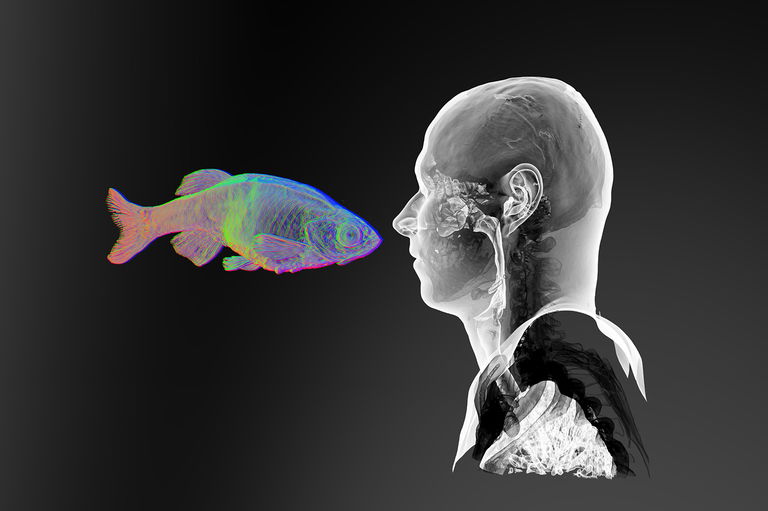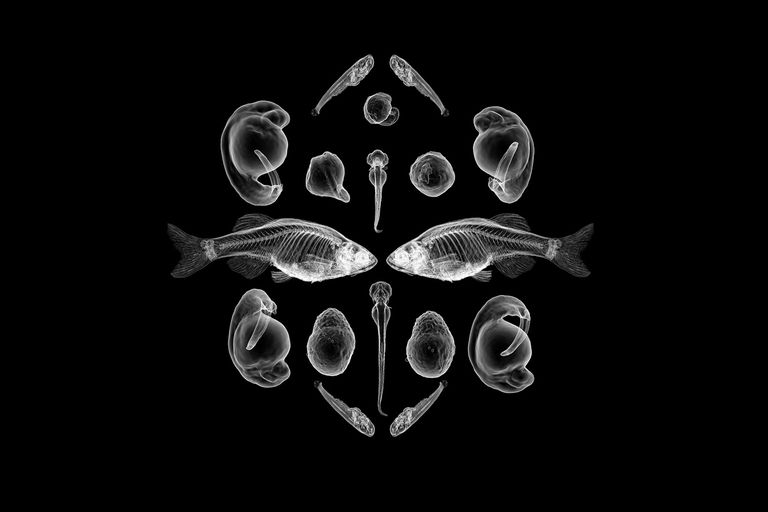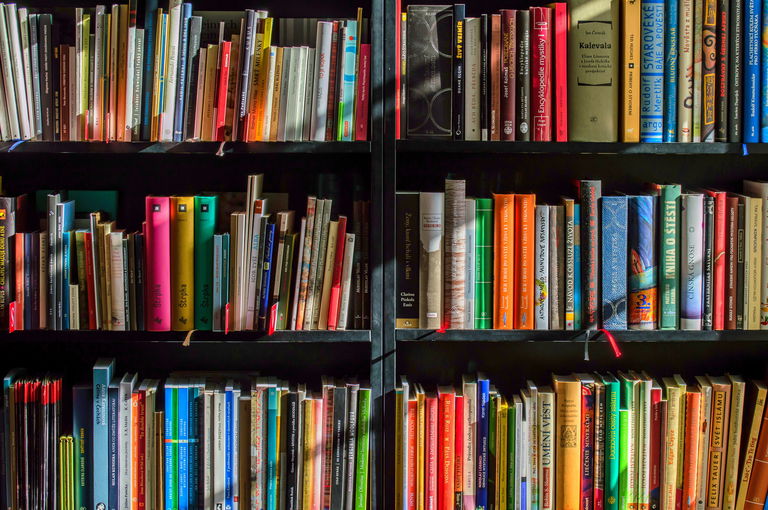
What happens when you mix an artist, a scientist and a very bright light?
Vivian Orr for Culture Days
Aug 18, 2020
Early on I must have seemed like some ultra-persistent grade school child to staff at the Canadian Light Source, which in some ways isn’t that far off, I try to keep in touch with that curious grade 5-6 kid as part of my art practice.
In 2016, Fransaskois new media artist and sculptor, Jean-Sébastien Gauthier (hereinafter referred to as “JS”), signed up for a tour of the Canadian Light Source (CLS)…and then another, and another…until he was convinced he wanted to make art using the CLS.
The CLS is a national research facility, one of the largest science projects in our country’s history, producing the brightest light in Canada—millions of times brighter than even the sun—used by more than 1,000 scientists from around the world every year in ground-breaking health, environmental, materials, and agricultural research.

The synchrotron operates by accelerating streams of electrons to 99.99 per cent of the speed of light, fast enough to reach the moon in 1.3 seconds. Giant magnets bend the electron beam, creating a light millions of times brighter than the sun. When directed down beamlines, that light enables scientists to do analysis of physical samples such as plants and engine oil that is more detailed than with any other process, as well as to create images of structures at the molecular level.
To gain entry to this very exclusive instrument (there are only 40 synchrontons in the world and only one in Canada) JS realized he needed a partner, someone with inside access. He wrote a call for collaborators that was published in the CLS newsletter. Somewhat surprisingly he received numerous replies, but Dr. Brian Eames’ response stood out.
Dr. Brian Eames is a researcher at the University of Saskatchewan, College of Medicine, in the Department of Anatomy, Physiology, and Pharmacology, who uses the CLS, imaging techniques, and molecular approaches to study how cells turn into bone and cartilage.
All it took was one meeting over coffee, where they shared concepts on evolutionary biology and spitballed ideas for using the synchrotron to explore evolution, and they knew they could develop an exceptional collaboration. JS regularly visited Brian’s lab where they continuously discussed intersecting interests and possibilities. Based on their talks, JS drafted grant applications, one of which was accepted by Canada Council for the Arts.

Since 2017 JS has served as the Artist-in-residence at the Department of Anatomy, Physiology, and Pharmacology, at the University of Saskatchewan and facilities of the CLS synchrotron. No other artist has been granted research time at the CLS with artistic inquiry and aesthetic experimentation as the primary objective.
Art and science are natural collaborators. In the same way that art alters a perspective, or provides an unexpected revelation, so does science…
Cutting-edge 3D synchrotron radiation imaging techniques were used to create an immersive video installation, Dans la Mesure/Within Measure, which explores developmental biology, evolution, and the complex unity between humans and other life forms (specifically zebrafish, tiny and robust model organisms often used in genetic medical research.)
And their collaboration continues. In 2019, JS and Brian created an interactive piece for Nuit Blanche (which was shown at the U of S campus and downtown Saskatoon.) Our Glass engages viewers of all ages to peer within an hourglass, showing how embryonic development compares among animals with whom we share a close genetic heritage.

Jeff Cutler, past CLS Chief Strategic Relations officer had this to say, “Art and science are natural collaborators. In the same way that art alters a perspective, or provides an unexpected revelation, so does science. Researchers from around the world come to our light source in order to see things differently, and their findings often change how we look at the world. It’s this search for a new way of seeing things that brings art and science together, and that’s why it’s important for us to work with artists like JS. Not only does his work introduce the CLS to a new audience, but he has also challenged us to see our own work differently.”
Stay tuned for more as JS continues to redefine contemporary art practices through research, technology, and building bridges across disciplines and people… he recently bought a VR (virtual reality) helmet!
This article is part of a special blog series featuring writers and creatives from across Canada with stories that both highlight and celebrate Culture Days’ 2020 theme of Unexpected Intersections. Explore more intersections below:
- Theatre x Sport: Until the Lights Go Out by Taylor Basso
- Indigenous Storytelling x Digital Media: “People are Finally Listening”–Indigenous Animation Rises Up by Chris Robinson
- Academia x Creativity: Building 21: Make zines, not research papers by Greta Rainbow
- Poetry x (Natural) Environment: Listen to the River: An Ode to the Columbia River by Saba Dar
- Teahouse x Activism: Chinatown’s Living Room: The gathering place for a budding activist community by Anto Chan
- Traditional Craftsmanship x Youth Outreach: At the Maritime Museum of the Atlantic, They Build More Than Boats by Aleen Leigh Stanton
- Book Clubs x Digital Landscapes: Strangers and Fiction by Anne Logan




